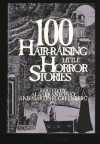Portable Magic
Reading, for me, is entertainment and an escape from the real world. But it can also inform and stretch the boundaries of the life I live.
Currently reading










The Bungalow Mystery - update ND3.5
1930 Chs 12-14 vs 1960 Ch 11-12
These chapters are peak Nancy Drew, with our intrepid heroine engaging in a little breaking and entering in her zeal to solve the mystery. The two versions follow the same rough outline of events, but with considerably different motivations and storytelling style.
1930 Nancy, mulling over the confrontation with Jacob Aborn, decides to get a hotel room on Melrose Lake and wait until after dark to do more investigating.
“At 6 o’clock she went downstairs for dinner. As she sat alone at a small table in one corner of the room, many diners regarded her with interest, for Nancy Drew was an unusually attractive girl, and the prospect of a daring adventure had brought a becoming flush to her cheeks.”
She calls home to let Laura know what she’s up to, overriding Laura’s concerns about her safety (Nancy’s father is still out of town), and adds the safety measure of instructing her to call the police if she’s not home in 24 hours. That night, she drives out to the cottage and sneaks around the perimeter looking for clues, but finding nobody at home, impulsively decides to break in by climbing a trellis up to Laura’s room. Tension ratchets up when Aborn shows up, almost catching Nancy before she can hide herself, but this gives her an opportunity to spy directly on him as he ransacks Laura’s room searching for her jewelry, pulls money out of the safe to fondle and gloat over, and packs suitcases and a bundle of food to go, all while muttering to himself about his plans. He also speaks of himself in third person as “Stumpy”. Nancy thinks that obviously “Stumpy” can only be the name of a nefarious underworld character and is convinced that he’s a horrible criminal that is about to go on the run.
1960 Nancy, as usual, is more deliberate than impulsive and takes pains to stay within legal limits. Planning in advance, she asks Laura for permission to enter the cottage so technically she’s not breaking and entering. She also spends more time on a cover story as an innocent girl on holiday at the resort hotel, hanging out at the beach in her swimsuit, dressing for dinner and listening to music in the ballroom, etc. Prepared-for-Anything Nancy keeps an overnight bag with swimsuit, change of clothes, and toiletries in her convertible, but for some reason doesn’t keep a spare set of batteries for her flashlight or even bother to put fresh batteries in the flashlight before setting off for a snoopy all-nighter.
Considerations:
The differences in the levels of actual or implied violence are again evident in this chapter, as 1930 Nancy wishes that she had her father’s revolver with her, thinking that she may need it at some point during the night’s events, and later sees Aborn arming himself with a weapon described as “gruesome”. The 1960 revision makes no such references.
There are also some amusing moments in the 1930 version that are missing in the revision, when the more impulsive and passionate original Nancy becomes enraged at seeing Jacob Aborn reading Laura’s private correspondence while ransacking her room. “She longed to fly out at him and accuse him face to face” but manages to restrain herself. Original Nancy is also forced to endure the discomfort and tedium of surveillance, cramped and uncomfortable wedged into her hiding spaces and having to wait for long periods of inactivity while Jacob goes through mundane daily activities.
There are no vital dated plot points, but I noticed that the 1930 cottage has no electric lights, as Aborn is carrying an oil lamp around with him as he’s moving through the house, and I was again surprised by a mention of Nancy having to make a long-distance call home, to a town that’s less than 20 miles away.
The Cult of Domesticity:
The mid-century values of true womanhood are in full evidence with these chapters in the 1960 revision, as the author inserts plenty of passages to soften and emphasize femininity and feminine interests that are absent in the original. Laura is all atwitter as she gets ready to go to the barbecue with Don in Nancy’s place. Nancy’s dinner is fully described (steak, baked potato, and tossed salad). The passage I quoted above is almost fully transcribed and inserted into the original, which is a little jarring, as the descriptive style of Mildred A. Wirt Benson contrasts sharply with Harriet Stratemeyer Adam’s utilitarian prose. But Adams expands on Nancy’s attractiveness with a Romance opportunity, when, as she lingers on the porch watching couples dance, a red haired young men began to walk towards Nancy with an invitation in his eyes, but she hastily goes to her room laughing about mixing romance and detective work.
Index of Posts:
ND3.1 1930 Chs 1-3 vs 1960 Chs 1-2
ND3.2 1930 Chs 4-6 vs 1960 Ch 3
ND3.3 1930 Chs 7-9 vs 1960 Chs 4&8
ND3.4 1930 Chs 9-11 vs 1960 Ch 5-7; 9-10
ND3.5 Chs 12-14 vs 1960 Ch 11-12
ND3.6 1930 Chs 14-17 vs 1960 Ch 13-14
ND3.7 1930 Chs 18-21 vs 1960 Ch 15-17
ND3.8 1930 Chs 22-25 vs 1960 Ch 18-20
 7
7

